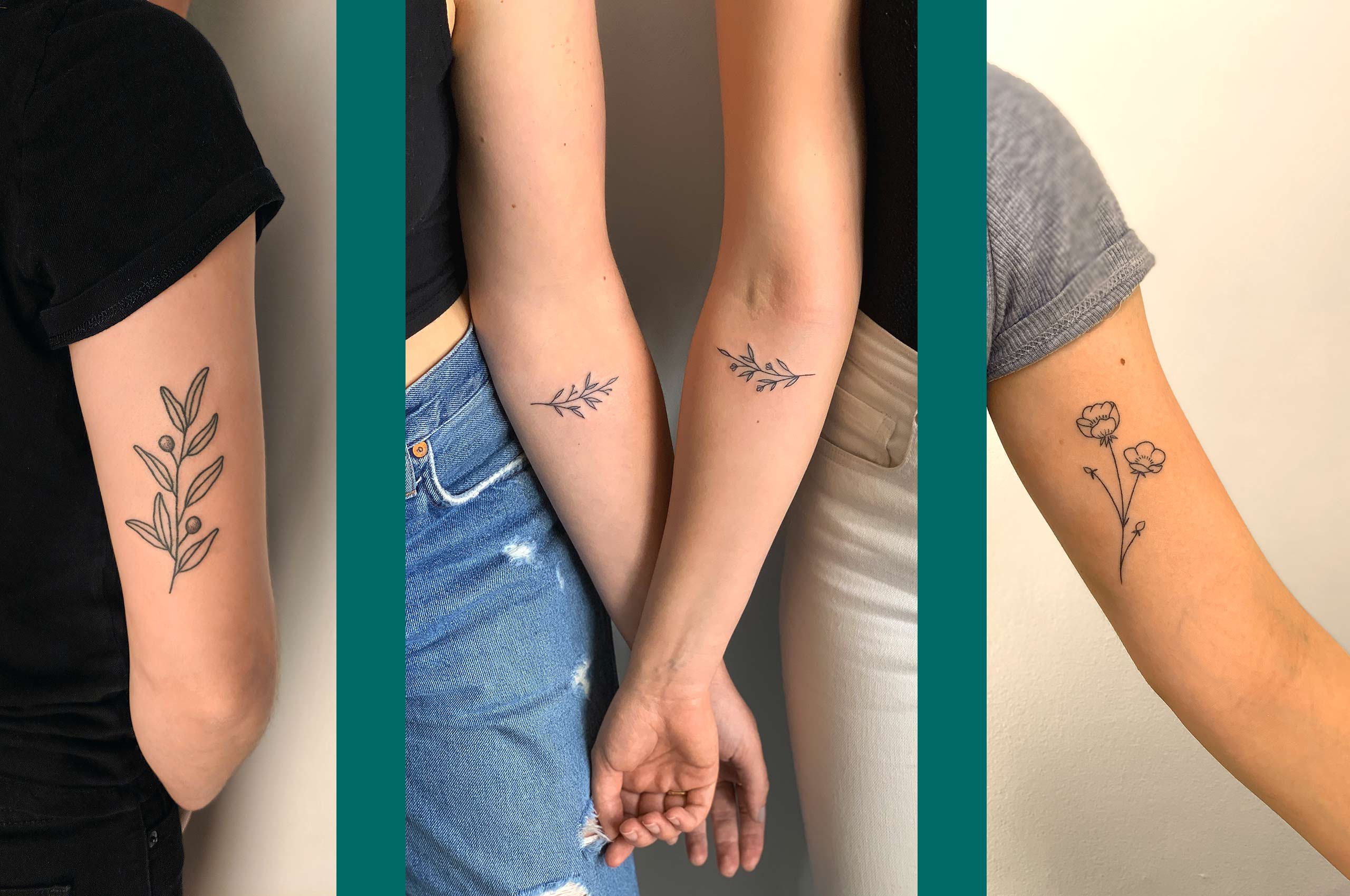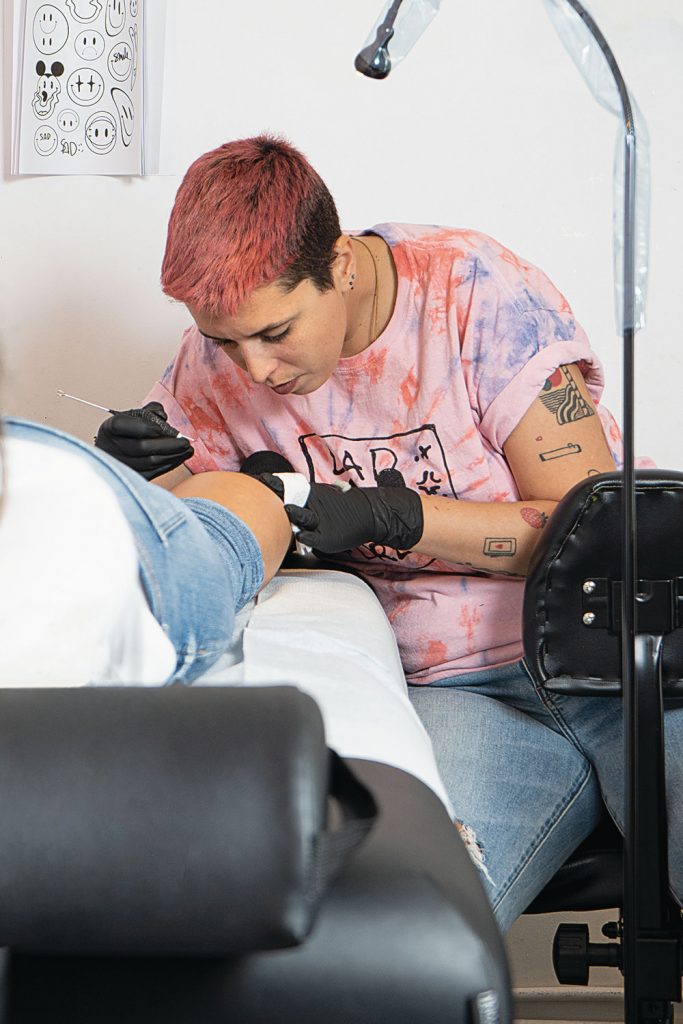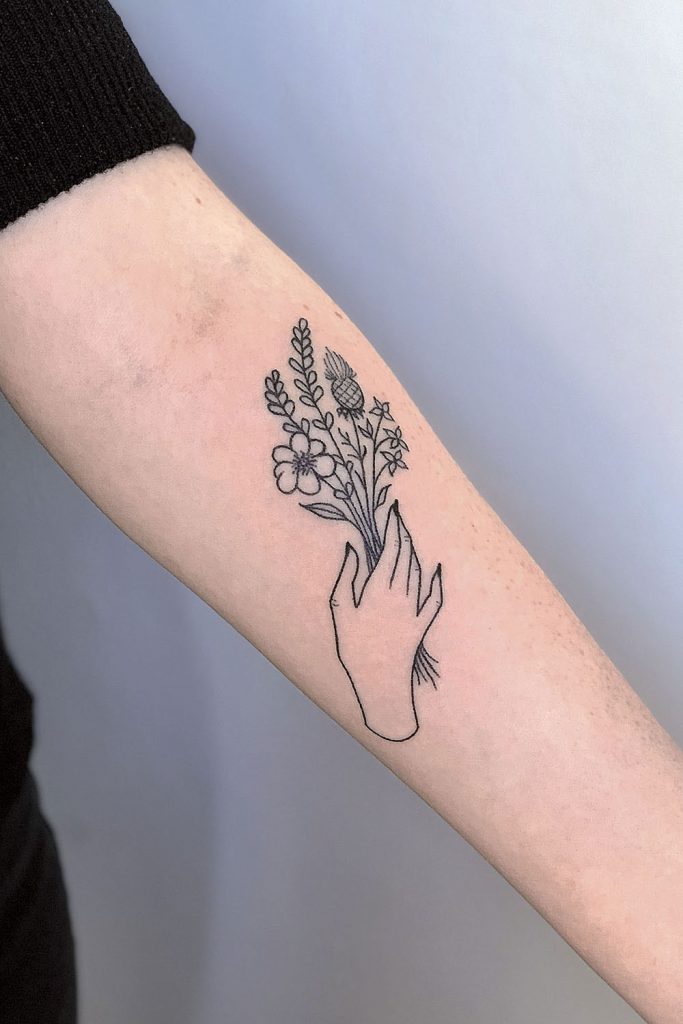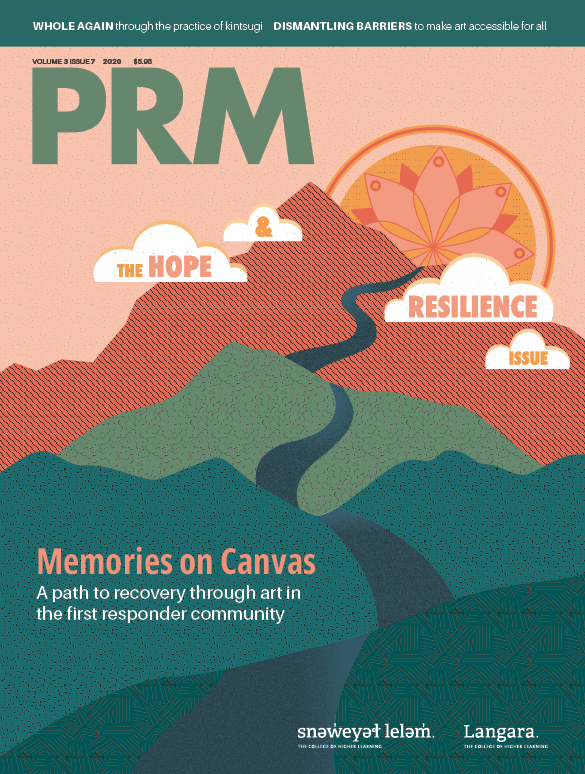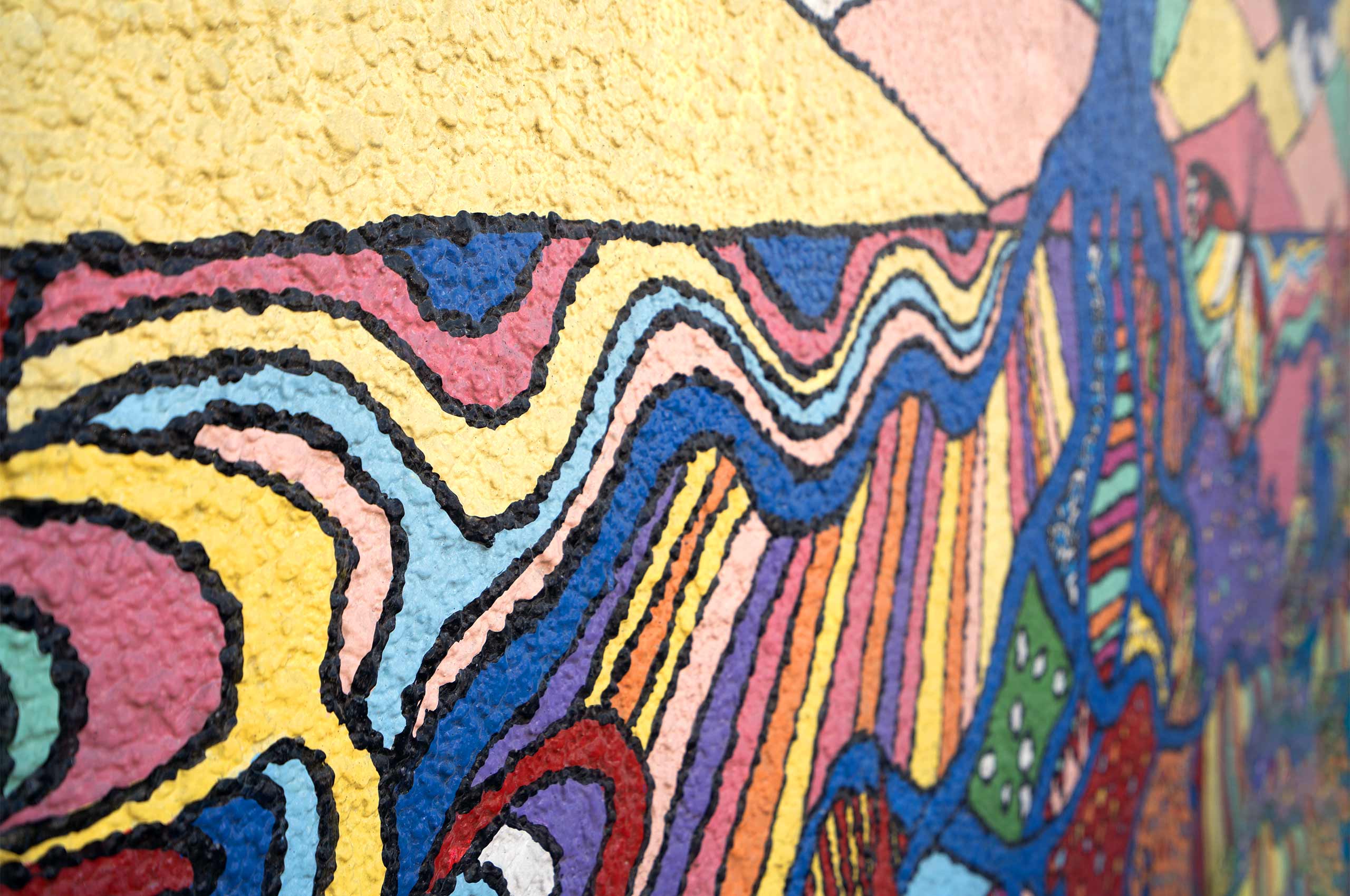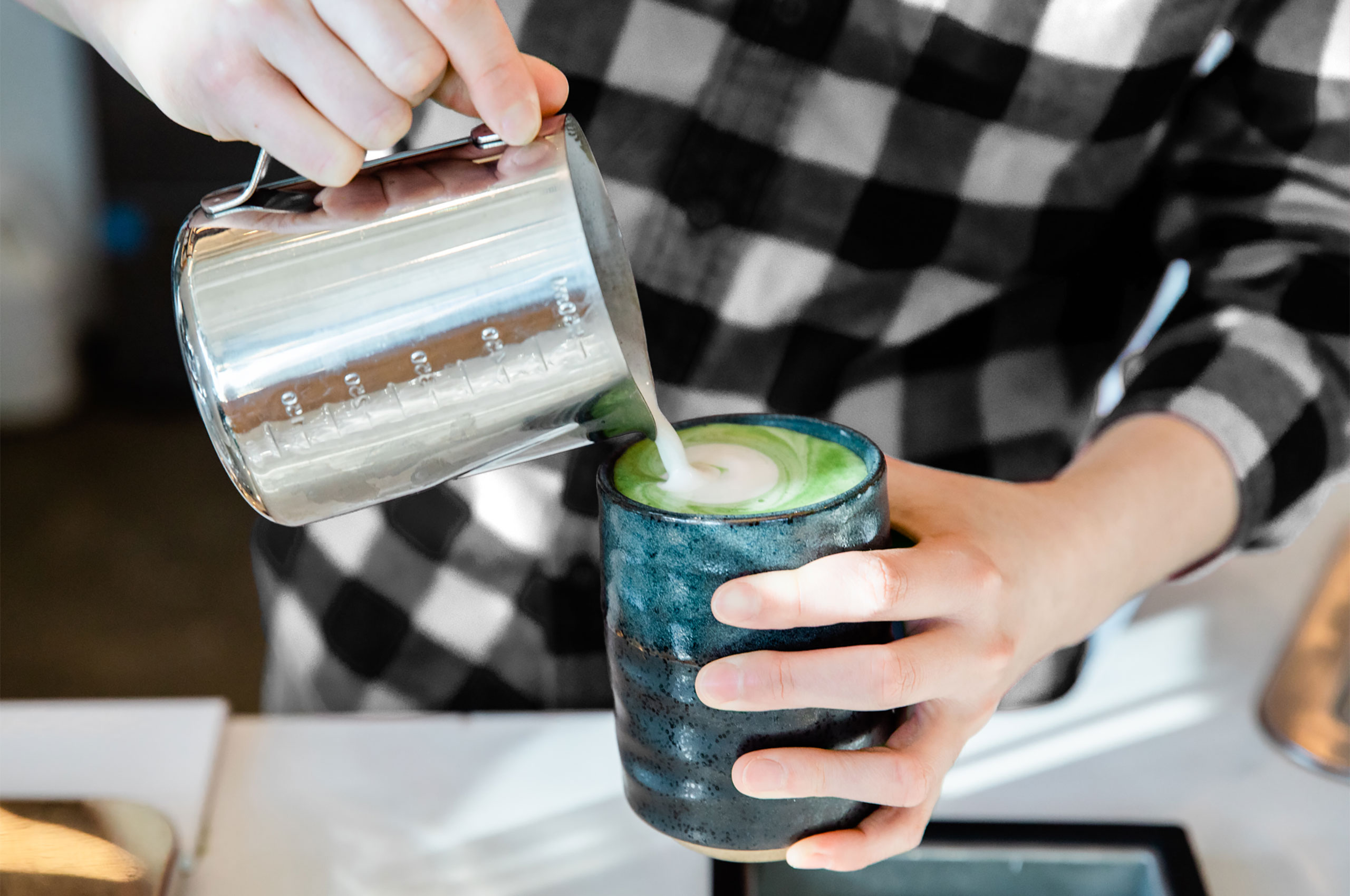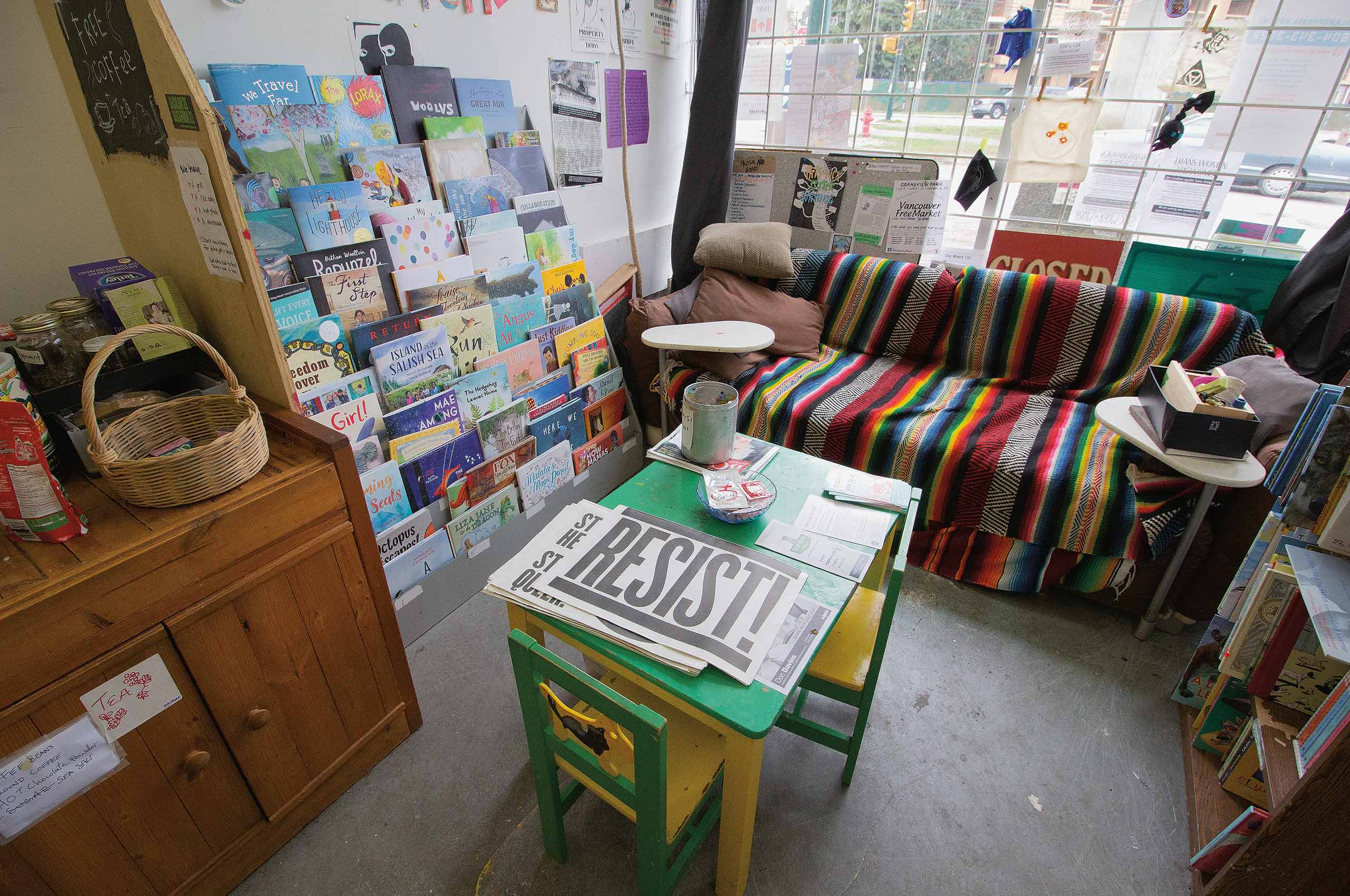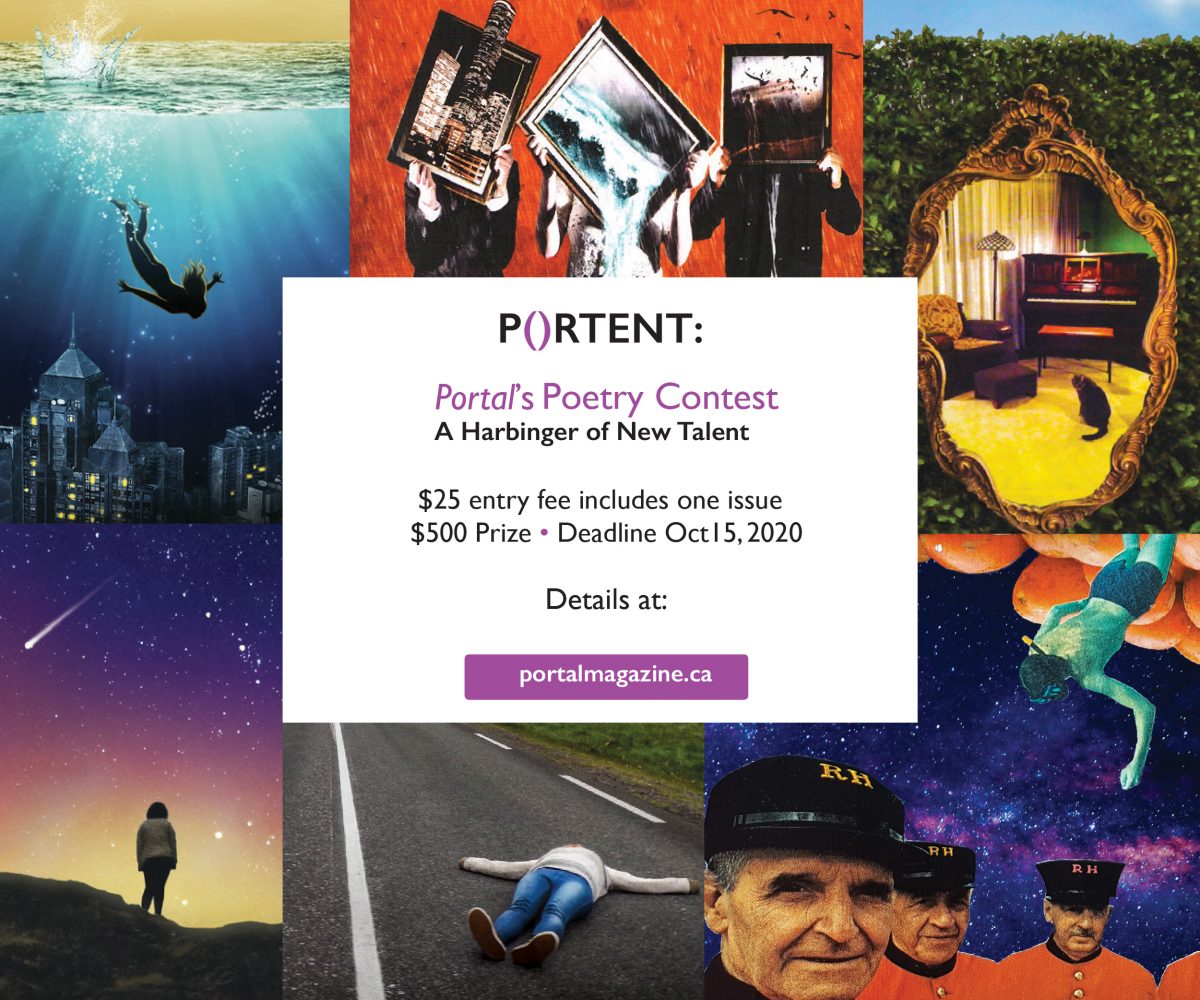Artist Kate Holley started her stick and poke tattoo career when a friend returned from a party with a half-finished tattoo. Equipped with a sterilized needle and ink, Holley finished the job. After successfully using a similar method to give tattoos to friends and family, she took a break from school and rented a studio space in the hope of launching a new career. “I said to myself, ‘Okay, let’s just see how this works. If it doesn’t work, I’ll go back to school.’ ” She adds, “it’s been four years and I haven’t gone back.” Now one of many independent Vancouver tattoo artists, Holley has made a viable career from hand-poke tattooing.
Pifa Alarcon says her visa was at stake, and a lot was on the line when she made the transition from corporate graphic designer to freelancer and tattoo artist. “It was big for me, changing my job,” Alarcon explains. “I thought, ‘If I’m going to go for this, I have to do it right.’ ” Like Holley, who attended Emily Carr University of Art + Design, Alarcon has a formal art background. After finding herself in a creative rut with her corporate design job, she bought a hand-poke tattoo kit and began practicing on herself—it quickly turned from a hobby to a career.
Both Holley and Alarcon provide an alternative to the mainstream approach of machine tattooing. The spaces both artists work in foster a more inclusive and less daunting environment for those who do not feel welcomed by machine tattoo culture, which can be challenging and intimidating to break into. Alarcon has experienced multiple rejections and dismissals of her interest in the tattoo industry, both before her career as a hand-poke artist and as an established artist. Similarly, Holley felt that she did not fit in the typical tattoo shop mould. “I had never thought about being a tattoo artist, because when I was growing up it was never a thing like it is now,” she says. “The only tattoos I knew of were Sailor Jerry, hardcore, traditional, skulls and blood, and I was not into any of that. ‘Tattoo artist’ sounds so gritty and aggressive, and I’m not like that at all.”
With the wealth of information on the internet and the availability of materials, both Holley and Alarcon were able to immerse themselves in the hand poking craft. This style of tattooing is quite different from machine tattooing, which uses dual electric coils to push and pull groups of needles a millimetre below the skin, injecting ink at rates of 50 to 3,000 times a minute. In hand poking, also known as stick and poke, ink is pushed into the skin by individual needles. The tattoos from this process are made dot-by-dot, with each dot contributing to the lines and shading of the tattoo. In some places, natural materials like bamboo or thread are used as alternatives. Due to the dot-by-dot method, these tattoos are often smaller than machine tattoos. Because they tend to cause less trauma on the skin, they also heal faster and are less painful.
Social media platforms, like Instagram, helped Holley and Alarcon establish their presence in Vancouver. Holley credits Instagram as essential to the launch and success of her career, saying “it would’ve been impossible otherwise.” As a result, these artists have become well-known among the East Vancouver population, particularly in the LGBT2Q+ scene. Holley says the majority of her clients are women and people from the LGBT2Q+ community. And it’s easy to see why—independent hand-poke artists create a space and dialogue for women and LGBT2Q+ individuals that mainstream tattooing often fails to provide.
For many women, going to a tattoo parlour can mean entering into an uncomfortable situation. “I’ve heard of this feeling of discomfort from clients, and it’s not even something you can complain about,” Holley says. “It’s not an actual assault, but a lot of male tattoo artists have made comments about clients’ bodies in a sexual way, or had them take off more clothes than they’ve needed to. It’s happened so many times to so many people, and no one’s talking about it—it’s just a thing that happens.”
Settings are crucial for many women and LGBT2Q+ individuals to relax. Holley describes her studio space as “somewhere I would want to hang out if I wasn’t working. There’s a bunch of plants and art all over the walls, and everything’s white. I have essential oils going.” Alarcon’s workspace is also a safe environment, located in a private studio in the Eastside. As part of a tattooing collective, the studio is known for its inclusivity and support of the LGBT2Q+ community.
Another desirable characteristic of hand-poke tattooing is the time the process takes. While both machine and hand-poke tattoo times vary based on the design, machine tattoos are usually quicker than the individual needle process of hand poking. Even though the duration of a stick and poke session is project specific, Alarcon says the minimum is usually two hours, which means the client and artist have space to talk and share. It is the opportunity to connect that emerging tattoo artist April Baker-Garrison appreciates. “There’s something really vulnerable about getting a tattoo,” they say, “it’s not just lying there for however many hours. You’re trusting someone to mark your body forever.”
During the stick and poke tattooing process, the artist must make space to listen to the client. “I have this joke that as soon as people lie back on the table, it’s like lying back on Freud’s couch,” Holley says. “Everything comes out. There’s something about seeing a stranger that you’re never going to see again that makes people share their entire life.” In this way, artists provide two services—the tattoo itself and a supportive ear. Holley views this as a symbiotic exchange. “I think we both benefit. I think in Vancouver you can feel very isolated, and after talking to these people, it gives me hope for humanity.”
It is because of the differences between mainstream and hand-poke tattooing that Baker-Garrison sought out the safe spaces hand-poke artists provide. They agree that many machine shops “don’t create the safest, friendliest space for women or LGBT2Q+ individuals who also want to be a part of this really cool culture.”
The space that hand-poke tattooing provides means that many people will be able to receive a tattoo in a comfortable setting without judgement. Holley feels such a connection to her work that when asked to do a larger machine piece, she says, “it’s something that I want to learn, but I love stick and poke so much that it’s hard to switch over.”





